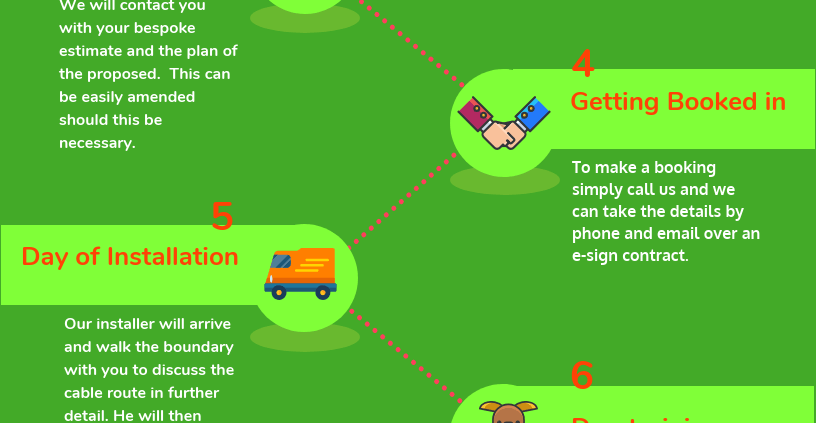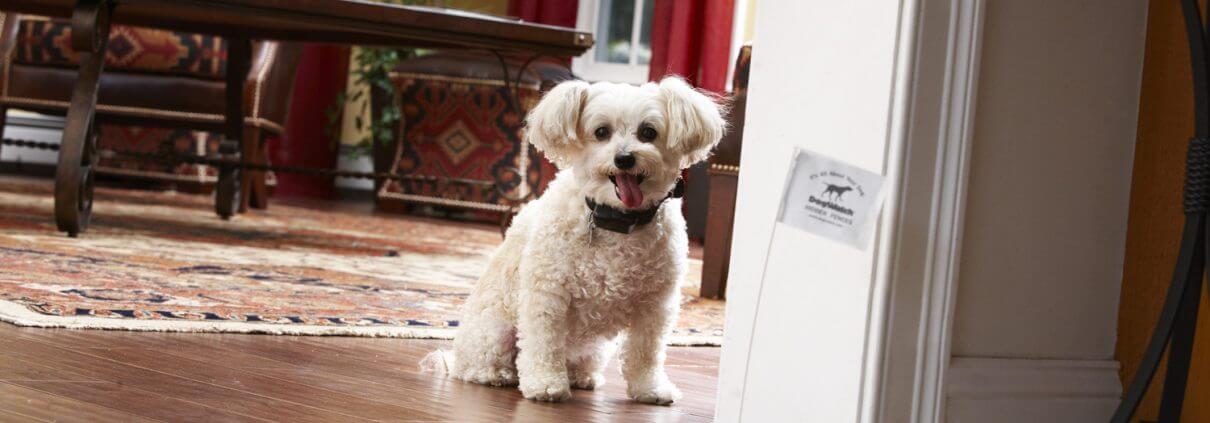Dogs and Fences – Do They Go Together?
A good fence will keep your dog inside your garden and other dogs (and other dangers) out of your garden. Unfortunately, many dogs look at a fence as a challenge to surmount. They want to dig under it, go through it, or climb over it.
Since the point of a fence is not to create a puzzle for your dog to solve! Let’s look at some ways to keep your dog inside your fence:
Remove Aids to Escape
It is amazing what dogs can use to their benefit when trying to escape from the garden.
- A bin can stored next to the fence becomes a climbing aid; a step stool.
- Firewood piled next to a fence does the same thing; it’s easy to climb up on firewood then hop or climb the fence.
- A tree with a low limb hanging over the fence is also an avenue to escape.
Walk around your garden and look at everything from your dog’s point of view. Then remove all of those climbing aids.
Stop Fence Tunnellers
Dogs who dig under a fence to escape can be persistent. Filling in each hole, won’t stop a dog from digging and can be frustrating as a never ending chore. Therefore a more permanent solution works better.
The best solution is to create a L-footer along the base of the fence. Take a roll of heavy garden fence or hardware cloth (wire fencing with wire squares) and unroll it alongside your fence. Bend the fencing so a foot of it can be attached to your fence and the remainder will lie flat on the ground at the base of the fence extending into your garden.
The name, L-fence, describes the L shape of the fencing once it’s shaped. The base of the L can be staked to the ground, covered with dirt, gravel, rocks, or just let the grass grow up through it. If you let the grass grow, remember it and don’t mow over it; cut it using other, safer means.
Stop Fence Jumpers
If your dog likes to jump the fence, create a L-footer but turn it upside down so it’s at the top of your fence. Create that L-shape and fasten the short side to the top of your fence with the rest of the garden or hardware fencing angled into your garden at the top of the fence so when your dog looks up, fencing is above.
You’ll need to use some ingenuity to anchor this fencing though. You can use some wood to create supports anchored to the top of your fence. These will support the folded over garden fence or large angle irons or even metal shelf supports. Take a look at your fence and use your imagination.
Of course, we have to give our pooches credit for the clever ways they can escape and once they find a way out they will use it again and again if not blocked.
There is one surefire way to effectively contain your dog, which is also aesthetically pleasing with or without a static boundary fence and that is through the use of a wireless dog fence system, read more about the Dog Fence system or get in touch with us to discuss your needs.








